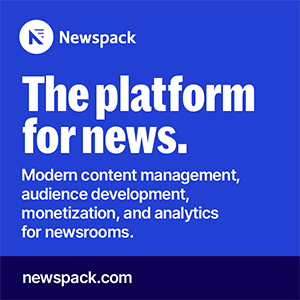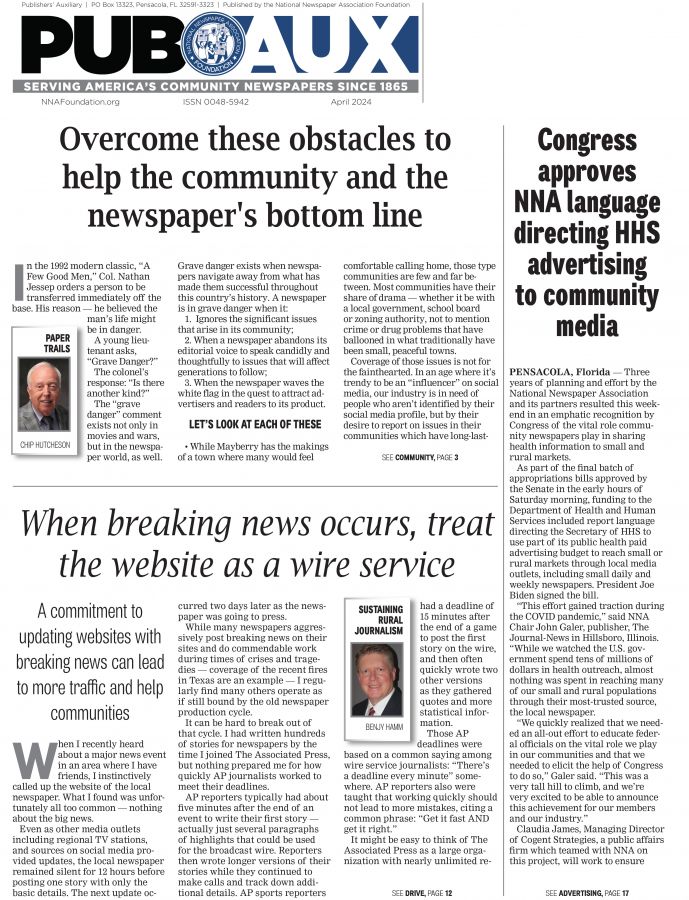Finding ways to engage your newspaper’s audience
Jun 1, 2015
By Stanley Schwartz
Managing Editor | Publishers’ Auxiliary
COLUMBIA, MO—What’s the best way to reach your audience?
In the digital age, that’s the question a lot of publishers have been asking themselves. The younger generations are absorbing information in a variety of ways, sometimes in ways that leave traditional newspaper owners scratching their collective heads.
Have you ever thought about using the graphic novel approach to explain tough or complicated subjects? That’s taking a comic-book format and using it to explain traditional news to reach a younger audience.
Meghann Farnsworth, with the Center for Investigative Reporting, said some media outlets are experimenting with this technique. She spoke during a Reynolds Journalism Institute program on Dissecting Engagement: What’s Working and What’s Next. The two-day event brought in a group of speakers to look at various ways to engage an audience.
And getting someone’s attention quickly is important, said Amy Webb with Webbmedia Group. Some studies say you have about 30 seconds to engage an audience.
“Actually, it’s less than 3 seconds,” she said. “How do you display information on a mobile screen? What do you need to capture the audience’s attention?”
To answer that, one has to delve into the user’s data and habits.
“You need to learn his data and leverage what you know to deliver what he will interact with,” she explained.
Data and analytics can be overwhelming, said Matt Lindsey with Mather Economics. He, Kent Schacht and Chris Christian talked about building and packaging digital products.
Schacht said it’s difficult to wean an audience from free content. “But quality content needs money to support it.” Media companies need a direct-to-consumer relationship in order to succeed in the future.
Schacht said progressive organizations use data to program their sites. They understand that an audience will change by the time of day it engages a website.
Everyone agreed that content is important to getting people interested in your site or your news, even if it’s sponsored content, said Annie Fox with Chartbeat.
“The content has to be worth reading,” she said.
In addition to graphic novels, Farnsworth said it’s also possible to do dramatic representations of the news with a local theater group.
“It helps people understand the importance of the investigations,” she said. There have also been coloring books created for children.
Jake Batsell, who wrote the book, “Engaged Journalism: Connecting with Digitally Empowered News Audiences,” the future of news may be dependent on “how the organization considers interacting with its audience in furtherance of its journalistic and financial mission.”
And that could mean monetizing the audience relationship, and understanding the audience without sacrificing stories.
Jigar Metha and Kevin Dubouis with AJ+ said you have to lead users to a conversation. They also said to use video as a building block for engagement. They showed a brief clip of a speech by President Obama that had been overlaid with memes. The clip brought laughter from the audience, and that laughter is what a news organization can use to bring people back to the story.
Chad Davis with the New York Times interactive news said his company is developing tools for the newsroom. Once is an electronic watermarking tool. The Times uses an event tracking system to learn more about readers. He noted that Google Analytics does this, too.
Chad Martin with VML, based in Kansas City, uses a social media strategy as part of a strategic initiative. Social sites can help a news organization make a connection to a community.
Webb also said that whoever owns the platform owns the content. She added that news organizations should not just be a supplier of news to other outlets, but they should own the platform. That’s the way to earn the money.
“You can partner with a third party or do it yourself,” she said.
Carla Zanoni with the Wall Street Journal, said the WSJ uses a variety of platforms to engage an audience, and all the platforms are designed to drive readers back to the print product.
“Even so,” she added, “a person can walk away with just a piece and still be satisfied with the story.”
Many of the speakers said it’s important to poll your audience, run surveys and find out what they’re interested in reading or learning more about.
For the Wall Street Journal, Zanoni said the company looks at what’s trending online to determine what will go on the front page. She also said it’s important to know when a trend is over and it’s time to move on to something else.







